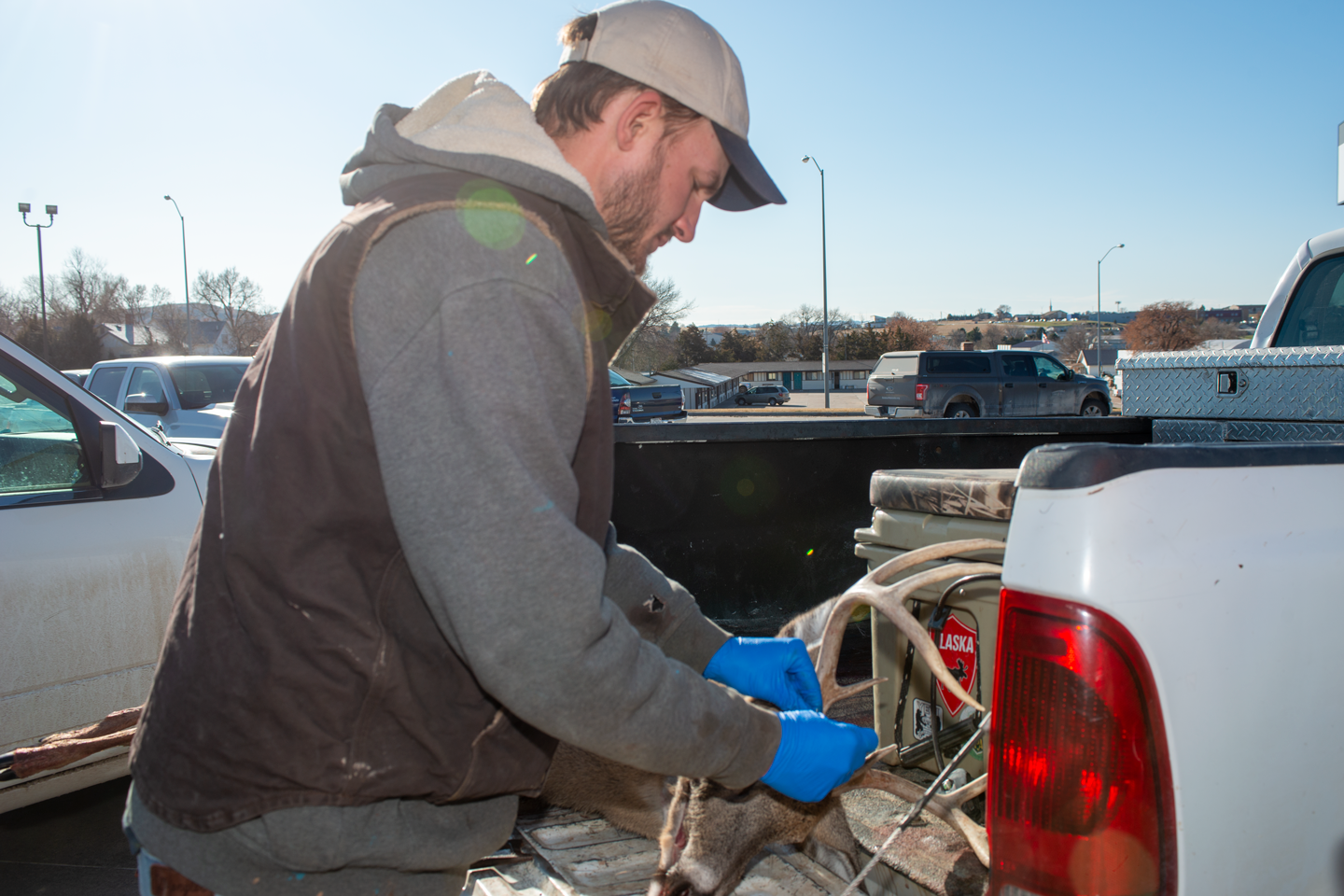Bovine tuberculosis
Bovine Tuberculosis (TB) is a progressive, chronic bacterial disease caused when bacteria attack the respiratory system of primarily cattle, though deer may also be infected. The disease compromises the immune system and can lead to death. If left unchecked, the disease would likely spread and become established within the deer population. As a result of this, there would be permanent risk of continuous deer-to-deer or deer-to-livestock transmission of the disease. Bovine TB in animals typically presents in the lungs but may also occur in the intestines and other parts of the body.
As a chronic disease, bovine TB can take years to develop. The disease grows very slowly and only replicates every 12-20 hours. The lymph nodes in the animal’s head usually show infection first, and as the disease progresses, lesions will begin to develop on the surface of the lungs and chest cavity. In severely infected deer, lesions can usually be found throughout the animal’s entire body.
Frequently asked questions
Bovine TB is spread primarily through the exchange of respiratory secretions between infected and uninfected animals. This transmission usually happens when animals are in close contact with each other. Animals may also become infected with TB by ingesting the bacteria. Thus, animal density plays a major factor in TB transmission. Bacteria released into the air through coughing and sneezing can spread the disease to uninfected animals. Research also suggests that bovine TB can also be contracted from ingesting contaminated feed.
Severe disease can develop in some deer within a few months of infection, while other deer do not become symptomatic for years. Hunters do not always readily recognize small lesions in deer. Abscesses may not be visible to hunters when field dressing deer. Infected animals may have yellow to tan, pea-sized nodules in the chest cavity or lungs. Lymph nodes of the head and neck can be swollen and soft. In fact, most infected white-tailed deer appear healthy.
There are no effective vaccines for disease prevention and no effective medications for treatment of bovine TB in wild deer. Instead, a combination of wildlife disease surveillance and deer management strategies can be used to eliminate the disease if present in wild deer. Wildlife surveillance monitors the spatial distribution and prevalence of the disease, while hunters are also asked to examine their deer.
Bovine tuberculosis, an infectious disease found in white-tailed deer, elk and domestic livestock, has been a problem since the 19th century when it was introduced by European cattle. According to DNR records, TB was the leading cause of death in humans in 1917. The outbreak was initially brought about by people drinking raw milk from infected cows. Because of modern pasteurization and meat inspection laws, humans are not particularly at risk for contracting the disease.
In the United States today, the threat of humans contracting bovine TB from animals is extremely remote. Most human tuberculosis is caused by the bacteria M. tuberculosis, which is spread from person to person and rarely infects animals. Bovine TB is caused by the closely related bacteria M. bovis, which is capable of infecting all mammals including people. The United States has actively pursued a bovine tuberculosis eradication program since 1917. This program, together with food safety initiatives, has been very effective in reducing the likelihood of people contracting tuberculosis from M. bovis.
Good field-dressing techniques are important to avoid contact with TB and other wildlife pathogens. The best way for a hunter to ensure his or her safety is to wear disposable rubber gloves when gutting a deer. Special attention should be paid to the lungs and chest cavity, where small lesions may be evident in an infected deer. Every precaution should be taken to avoid cutting yourself when field dressing a deer.
While it is possible to transmit bovine TB from animals to people, the likelihood is extremely rare. It is highly unlikely that a person field dressing or eating the cooked meat of animals infected with bovine TB would become infected. The TB bacterium is very rarely found in meat (muscle tissue). Since bovine TB is primarily spread through respiration, the bacterium is generally found in lung tissue. As a precaution, all meats (including deer), should be thoroughly cooked to an internal temperature of 165 degrees F. This effectively kills all known bacteria, including TB and E. coli.



